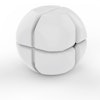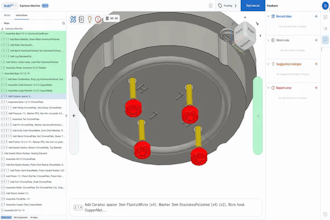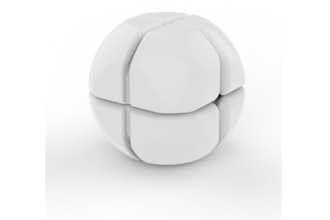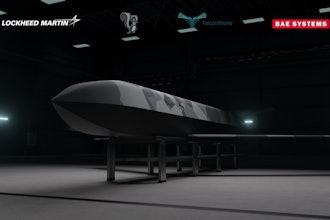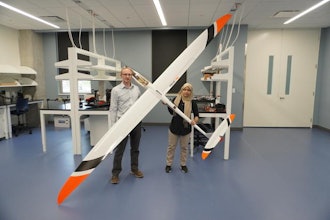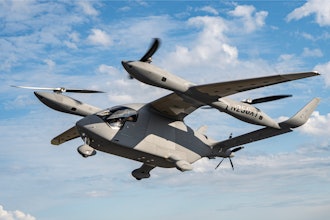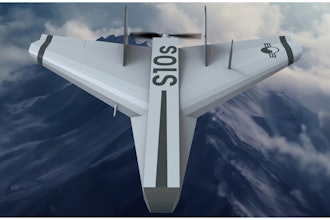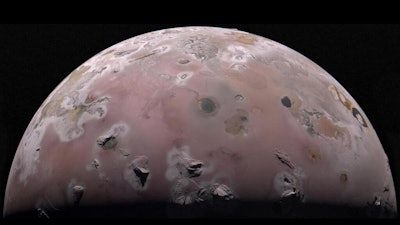
The Southwest Research Institute-led mission team of NASA’s Jupiter-orbiting Juno spacecraft executed a deep-space move in December 2023 to repair its JunoCam imager to capture photos of the Jovian moon Io. Results from the long-distance save were presented during a technical session on Wednesday, July 16, at the Institute of Electrical and Electronics Engineers Nuclear & Space Radiation Effects Conference in Nashville.
JunoCam is a color, visible-light camera. It was included on the spacecraft to engage the public with a citizen science program, but its images have led the way to several important scientific discoveries as well. The optical unit for the camera is located outside a titanium-walled radiation vault, which protects sensitive electronic components for many of Juno’s engineering and science instruments.
This is a challenging location because Juno’s travels carry it through the most intense planetary radiation fields in the solar system. While mission designers were confident JunoCam could operate through the first eight orbits of Jupiter, no one knew how far the instrument would last after that.
Throughout Juno’s first 34 orbits (its prime mission), JunoCam operated near flawlessly, returning images that the team routinely incorporated into Juno’s science papers. Then, during its 47th orbit, the imager began showing hints of radiation damage. By orbit 56, nearly all the images were corrupted.
Long Distance Microscopic Repair
While the team knew the issue may be tied to radiation, pinpointing what, specifically, was damaged within JunoCam was difficult from hundreds of millions of miles away. Clues pointed to a damaged voltage regulator that is vital to JunoCam’s power supply. With few options for recovery, the team turned to a process called annealing, where a material is heated for a specified period before slowly cooling. Although the process is not well understood, the idea is that the heating can reduce defects in the material.
JunoCam imaging engineer Jacob Schaffner of Malin Space Science Systems said, “The Juno team knew annealing can sometimes alter a material like silicon at a microscopic level but didn’t know if this would fix the damage. We commanded JunoCam’s one heater to raise the camera’s temperature to 77 degrees Fahrenheit (25 degrees Celsius) — much warmer than typical for JunoCam — and waited with bated breath to see the results.”
Soon after the annealing process finished, JunoCam began cranking out crisp images for the next several orbits. But Juno was flying deeper and deeper into the heart of Jupiter’s radiation fields with each pass. By orbit 55, the imagery had again begun showing problems.
Hail Mary Time
JunoCam instrument lead Michael Ravine of Malin Space Science Systems said, “After orbit 55, our images were full of streaks and noise. We tried different schemes for processing the images to improve the quality, but nothing worked. With the close encounter of Io bearing down on us in a few weeks, it was Hail Mary time: The only thing left we hadn’t tried was to crank JunoCam’s heater all the way up and see if more extreme annealing would save us.”
Test images sent back to Earth during the annealing showed little improvement the first week. Then, with the close approach of Io only days away, the images began to improve dramatically. By the time Juno came within 930 miles (1,500 kilometers) of the volcanic moon’s surface on Dec. 30, 2023, the images were almost as good as the day the camera launched, capturing detailed views of Io’s north polar region that revealed mountain blocks covered in sulfur dioxide frosts rising sharply from the plains and previously uncharted volcanos with extensive flow fields of lava.
Testing Limits
To date, the solar-powered spacecraft has orbited Jupiter 74 times. Recently, the image noise returned during Juno’s 74th orbit. The team plans to continue experimenting with annealing with the hope that the camera will again provide quality images.
Since first experimenting with JunoCam, the Juno team has applied derivations of this annealing technique on several Juno instruments and engineering subsystems. The lessons learned are exceeding the mission’s expectations.

